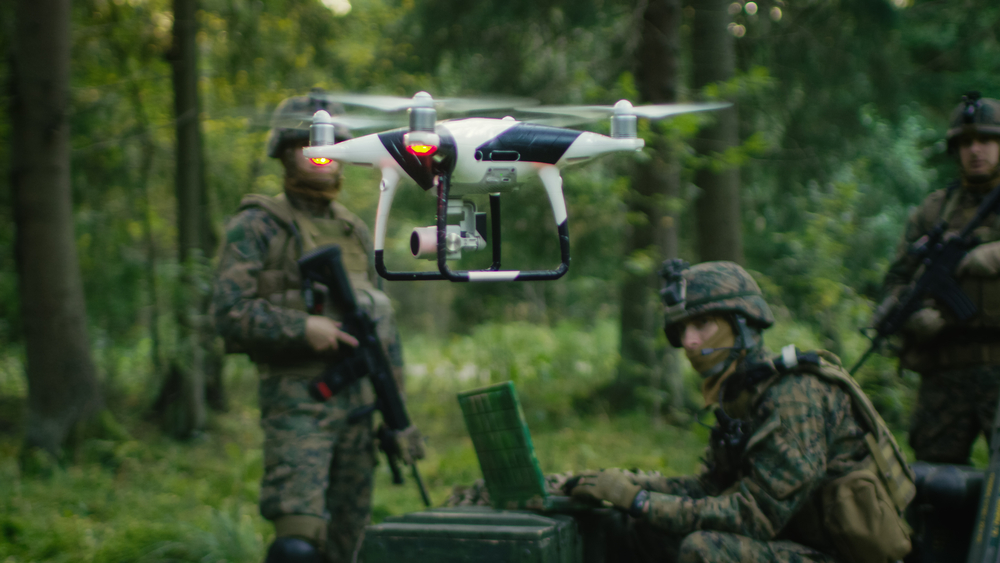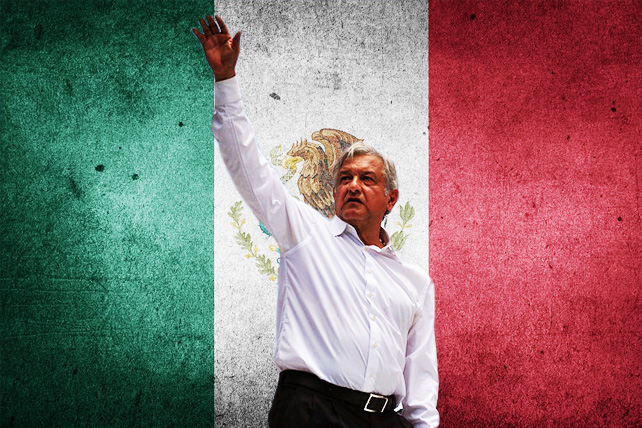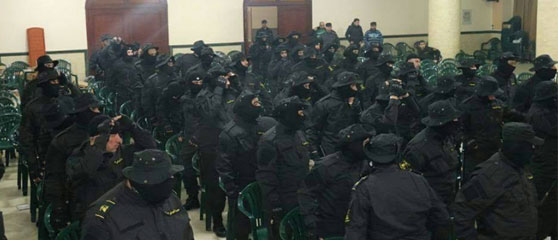“Sometimes I feel like a God hurling thunderbolts from afar,” one US soldier commented, regarding the god-like power drone operators have as they surveil from above. Aerial military capacity was once dominated by state powers. This monopoly, however, has increasingly been challenged by crafty militias and other armed forces – as we have seen in Ukraine – thanks to the development of cheaper drone technology and aerial UAVs.
While consumers have had unprecedented access to drones, so too have insurgent and criminal groups. The traditional aerial hegemony of nation-states has collapsed, making power over the sky accessible to all; and with this change comes a new form of drug war violence currently developing in Mexico.
In the Southern state of Guerrero, drone violence is becoming a growing problem. A reported alliance between Jalisco New Generation Cartel (Spanish acronym CJNG) and la Familia Michoacan has seen the tactic of drone attacks spread to the region. This joins reporting that CJNG has its own ‘elite drone squad’ identifiable with a specific badge worn on their armour (see below). The drone attacks have been targeting the civilian population there, forcing many to flee their homes.

Commercial drones are easily modified into deadly weapon; one researcher reported that cartels attach hooks to drones to remotely release explosives on targets. Meanwhile, images have surfaced of drones plastic containers strapped onto them, holding C-4 explosives and ball bearings that act as shrapnel to maximise damage.
Videos of drone warfare have shown their destructive potential: in one video released online, alleged members of the Sinaloa cartel drop explosives on members of CJNG, who are seen running before a vehicle is destroyed.
The use of drones in Mexico is by no means a new tactic. Drone usage reportedly began around 2010, mainly for surveillance by criminal groups. Since then, drones have been used for smuggling drugs, counter-offensive operations against state forces and other criminal groups, and as civilian displacement tools, with explosives dropped on civilian encampments to disperse them.
The increase in drone sales is significant in Mexico. In 2016, Mexico accounted for 5.6% of the global legal drone market; this is estimated to reach 11.5% by 2024.
Of course, the modification of consumer drones for violent means wasn’t pioneered by cartels. The Islamic State (ISIS) modified DJI drones in 2016 to drop grenades. Likewise, Ukrainian forces did the same in the Donbas; their use became so extensive in the war that leading consumer-based drone producer DJI halted all sales to Russia and Ukraine in April 2022, and issued a statement condemning the military use of their products.
Ukraine and Russia’s current conflict demonstrates the key role drones can play in modern warfare. It is a staple of Ukranian assaults: an estimated 10,000 drones are lost per month in their war, underscoring the military importance of this technology. One modified DJI drone can destroy an expensive tank or jet.
Drones as a show of power
However, there is something unique to the way cartels use drones. In Mexico, the number of drone-connected deaths remains relatively low. Instead, they are primarily a tool of surveillance or civilian displacement. These attacks are, perhaps, more of a spectacle to create fear and demonstrate sophisticated power, as opposed to an effective means of killing.
Drones can be understood as a form of psychological warfare against both the public and other criminal groups. Managing Editor for Mexico Violence Michael Leittieri told me: “There is a psychological impact, both on rivals and civilians – like German V-2 rockets, the terror is perhaps more the point than the strategic impact.”
The spectacle of violence is a central part of Mexico’s conflict. Cartels use social media to build an image of power: propaganda videos of masked men showing off illegal firearms, body armour and often improvised armoured vehicles are common. In reality, the majority of cartel members have little to no training and live an unglamorous lifestyle. Yet the idea that cartels have a central, sophisticated military wing has become paramount in this low-intensity conflict.
Leitteiri states: “[Criminal] Organisations are constantly engaged in public relations campaigns, and drones suggest a degree of combat competency and paramilitary power that attracts media attention and can, for a relatively small investment, help an organisation seem stronger than it actually is on the ground.”
Drones, a novel facet in this spectacle, allow for the perception of the colonisation of the aerial realm, a new technology that enhances their image of dominance not only of land, but of the skies. The potential violent power of drones is not to be discounted, however. While now they are fairly limited in Mexico’s conflict, in which bombardment of clear boundary and territory lines isn’t necessarily possible everywhere, they may become so in the future. Journalist Luis Chaparro told me: “It’s a matter of time for [drones] to become more sophisticated,” both in terms of weapons and as tools of surveillance.
“Drones are being used in areas where there is a very clear territorial conflict between organisations, where control of ‘civilian’ populations is very important”, Leitteiri confirmed. If this territorial control element of Mexico’s conflict expands, so too will the use of drones beyond surveillance purposes.
“Drones are, without reservation, one of the most disruptive technologies of our time,” writes academic Sarah Jane Fox. This disruption, a technology shifting all sides of warfare, is clear in Mexico. Criminal groups, Mexican authorities, and even US presidential candidates call for greater interventions in Mexico through the use of drones.
Aerial bombing, aerial trafficking
While cartel tactics and deployment of commercial drones are not unique, their incorporation in criminal groups’ violent tactics is distinctive. Paramilitary and criminal groups in Colombia, for example, where comparisons are consistently made to Mexico’s conflict, have not utilised drones consistently, beyond a few rare instances. However, there have been cases of other criminal groups using drones, more so for smuggling purposes rather than for offensive deployments. Earlier this year, Ecuadorian criminals used a drone to drop explosives on a prison containing some of the country’s most prominent drug lords, creating a hole in the roof for prisoners to escape from – an innovative demonstration of the unique power of drones. The ease of access to drones, coupled with cartels’ creativity seen in drug trafficking methods and routes may mean that we will continue to see them used in more innovative ways than ever before.
Limiting access to drones is incredibly challenging; their price, size, and reach means they will always be a problem, both for civilians and law enforcement. For now, drones used by criminal groups lack the effectiveness of high-tech, state-owned drones, or the sheer scale of the likes of Ukraine’s improvised drone fleets. Yet, this could change with technological innovations likely continuing to see the effectiveness, accessibility and affordability of commercial drones continue to increase.
While they are primarily used as a display of force and to displace people from strategic locations, their use comes at the cost of civilian populations, who must bear the brunt of the human cost of this technology. If cartel commercial drones were to become a more effective weapon for fatal violence – a likely reality given the deadly combination of cheap technology and drug war violence – then their use may expand beyond spectacle to a tool consistently used in the brutal violence between criminal groups and state forces.


